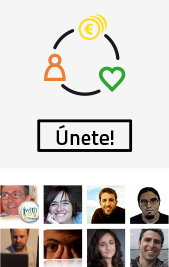

On 15 November 2014 the second of a round of two meetings on the planning and implementation of Learning to Live Together took place in Athens, Greece.
The participants were made up of teachers from various grade levels (from Kindergarten to Elementary to High School and Lyceum). They discussed how the Learning to Live Together manual would be implemented according to the different school grades, ages and school settings. As part of the meeting, teachers engaged in a “Visit to religious places” and a “Reflection session.”
A “Faith visit” was organized in order to allow teachers that are implementing the programme, who are not Religion teachers or Christian Orthodox, to get familiar with the different religious beliefs of the Christian students they work with. Dr. Angelos Vallianatos, member of the Interfaith Council on Ethics Education for Children, and facilitator of the Learning to Live Together, guided the teachers to a visit of three different Christian Orthodox churches in downtown Athens. He led the participants in a tour of the history of the Christian Orthodox religious tradition (through the development and change of rituals, symbolisms, religious paintings, icons, sacraments) as these could be detected in the three churches visited (the Cathedral, a chapel for the 11th century and one from the 12th century).
Dr. Vallianatos had also prepared sketches and drawings of the process of construction and renovation of the temples visited, indicating the different historical and social eras Athens has gone through. Participants had the opportunity to ask questions, reflect on the information given while at the same time looking and observing the icons, paintings and objects in the churches.

A “Reflection Phase” followed in a quiet cafe situated across the last church visited, where participants had the time to reflect and discuss on the information given. Some of the participants voiced their opinions as:
“I don’t practice religion and although I have passed outside the Cathedral so many times I never had the interest to go in it. I must admit I was fascinated by the visit, impressed by the wealth of information one can find in a worship place just by observing knowingly the objects around it. I feel thankful for the visit”
“I have a PhD in Theology and I thought that I knew whatever there was to know about my religion and its churches. Yet, this visit gave me the opportunity to spend time observing things I had not done in many years, re-seeing and re-evaluating them from a new perspective, reflecting deeper in my knowledge of them. Thank you for this”.
“I realized that I cannot go to Interfaith visits if I don’t go into my own Faith visit first, both literally and metaphorically. There are so many new things, new ideas, new thoughts and perspectives”.
“Religions should be taught in its location. Not only in classrooms. You cannot capture its essence in a school as you can do in a worship place”.
Everyone agreed on the exceptional methodology of Learning to Live Together, as it was the manual’s activity on Interfaith visits, that gave us the opportunity to “re-visit” our own religion in a way that none of us has done so before.
The post Learning to Live Together Progress of Teacher Training in Greece appeared first on Ethics Education for Children.















